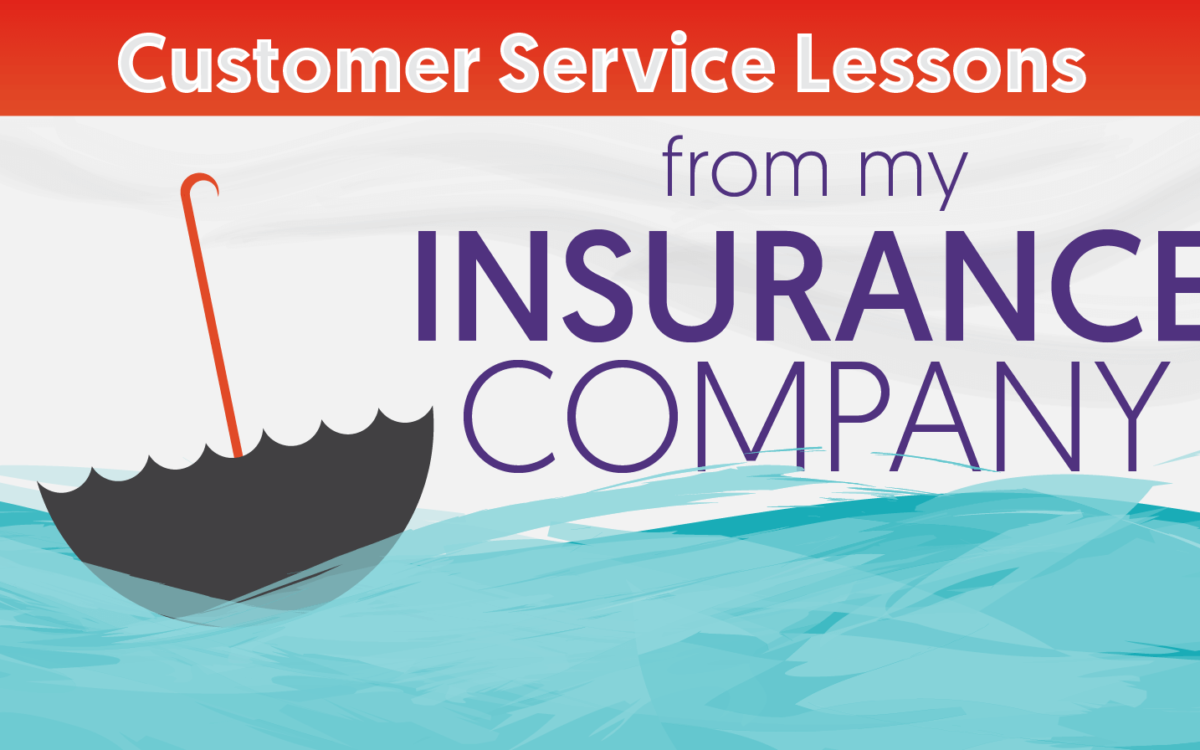
Customer Service Lessons From My Insurance Company
This article was written by Sharpen’s VP of Marketing, Murph Krajewski, and originally posted on Forbes.
I recently discovered that my wife is working for a company, and neither of us realized it. To make matters worse, her working conditions are frustrating, it’s not a rewarding position and the pay isn’t all that great.
I should back up a little.
For nearly 20 years, we’ve been customers of the same insurance company. We’ve carried multiple policies for auto and home, staying with the company through a dozen vehicles and houses. That’s almost as long as we’ve been married. And, the life of our account could be a little brother to our daughter.
Before I go any further, I want to be explicitly clear. This is not an angry customer rant and we’re not planning to leave, but I’m not mentioning the company by name because that isn’t the point. I want to be sure we stay focused on the main thing: my wife’s secret job.
Recently, we discovered a $100 increase to our bill. As the amazing manager of our budget, my wife called the 800 number to ask what had happened. Turns out, the wrong box was checked in the processing of a canceled claim. No funds were issued from the claim. A claim wasn’t created. It was just an errant mouse click and a $100 increase on our bill.
Thus began a story that I’m sure a majority of us have lived. We were at half a dozen phone calls over the course of more than five hours. In that time, my wife became a de facto coworker of a variety of people. She also went through some on-the-job training and received a good understanding of their systems from hands-on experience. Here’s what she learned:
1. The company didn’t empower its front-line service teams to solve problems.
If they did, the first conversation would have gone something like this: “Yes, Mrs. Krajewski. We’ve found the problem and I can get it fixed for you. No need to wait on the phone. I’ll send you a text message to the number you’re using when it’s corrected. Sorry for the hassle, and I hope this makes your day a little better. Thanks again for being such a great customer!”
Instead, there was a bothersome volley of notes taken down and read, information repetitively passed, blame assigned, instructions to call different departments and no corrective action taken. But all that’s needed is one person who is able to hear the problem, understand it and act as a champion on your behalf to solve it.
2. The company’s systems were outdated.
Every one of our calls was essentially a fresh start. Even though notes were taken, there was a disconnect in sharing our story from person to person on the service team. My wife had to re-explain the problem every time, leaving the story up to fresh interpretation and reaction from each new agent. They should have recognized my wife’s phone number and routed her to the same person she’d begun working with.
The world has evolved. Technology has evolved. Things that were difficult and inaccessible before aren’t necessarily so now. We’re in a good era for investigating new options.
3. The company’s service ethic didn’t begin with its customers.
This is tied directly to both points above, and it affects absolutely everything. The true issue facing businesses today is the need to approach their customer service ethics from a fresh position, making no assumptions. That beginning position must be, “what do we want our customers to feel?”
Answering this question creates a true north by which the entire company can navigate.
Once you know what emotions (and actions) you want to elicit from your most valuable asset, you can engineer the mechanisms needed to bring them about. The processes, policies, people, etc., are the gears in this machine. Once those gears are in place, apply “oil” to help them operate smoothly. That oil is your technology.
As I write this, my wife is still working for our insurance company. Her efforts are Sisyphean. Her salary will be zero since she’s working for the purpose of not paying more than we owe. It shouldn’t be this way, given our long-term relationship.
Business leaders, ask yourselves:
1. Are we serving the customer, or are the customers serving us?
2. Does our organization allow our people to offer real help to our customers?
3. Do our systems facilitate our people having a clear, human connection with our customers?
If you’re able to answer “yes” to any of these questions, please share your success stories in the comments here.

